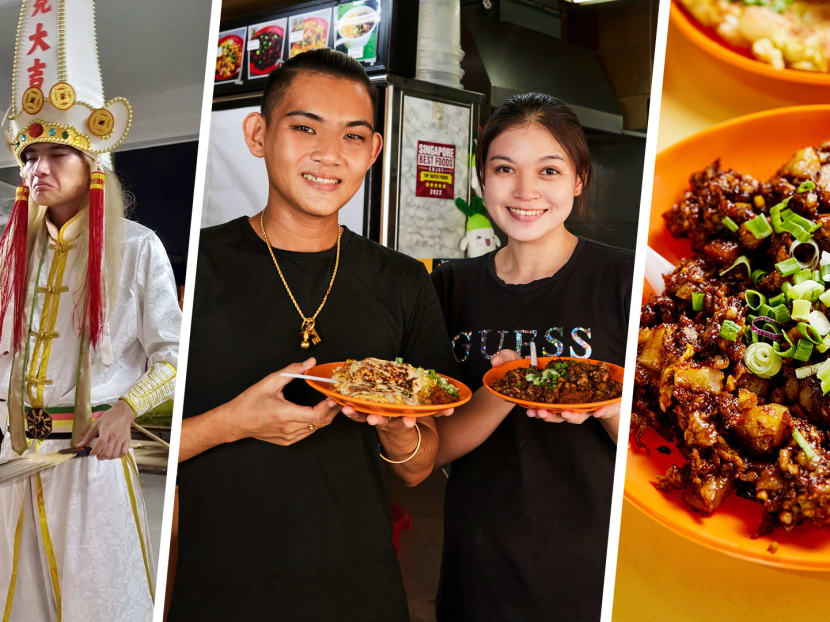22-Year-Old Spirit Medium Becomes Carrot Cake Hawker After Hell Deity ‘Reassures’ Him: “Go Ahead & Do It”
The part-time medium says after his ex-hawker parents suggested he open a stall, the hawker noob was apprehensive so he “consulted [hell deity] Toa Ah Pek for advice, and he told me that I didn’t have to be afraid as he would be there to look after everything”.
Qi Shan Carrot Cake at Cheng San Market & Cooked Food Centre looks just like any other carrot cake stall. It is helmed by a pair of Gen Z hawkers — Koh Ming Wei (left), 22, opened the shop last April after completing his National Service, and he is assisted by his sister Jing Hui (right), 24, who used to work as an assistant manager at a cinema. They offer both the traditional and modern versions of the dish – think white carrot cake fried with “Thai chilli flakes”, or topped with slices of torched cheese.
But appearances are deceiving. With his slick ponytail, tattoos and gold jewellery, Ming Wei looks more like a bit of a bad boy than someone who channels the spirit of the Monkey God and other Chinese deities into his slight frame a couple of times a month. You see, the soft-spoken young man is a self-styled Chinese spirit medium. During trances, he dons costumes that wouldn’t look out of place in a period drama and says he speaks in a “high-pitched voice”, coupled with animated mannerisms.
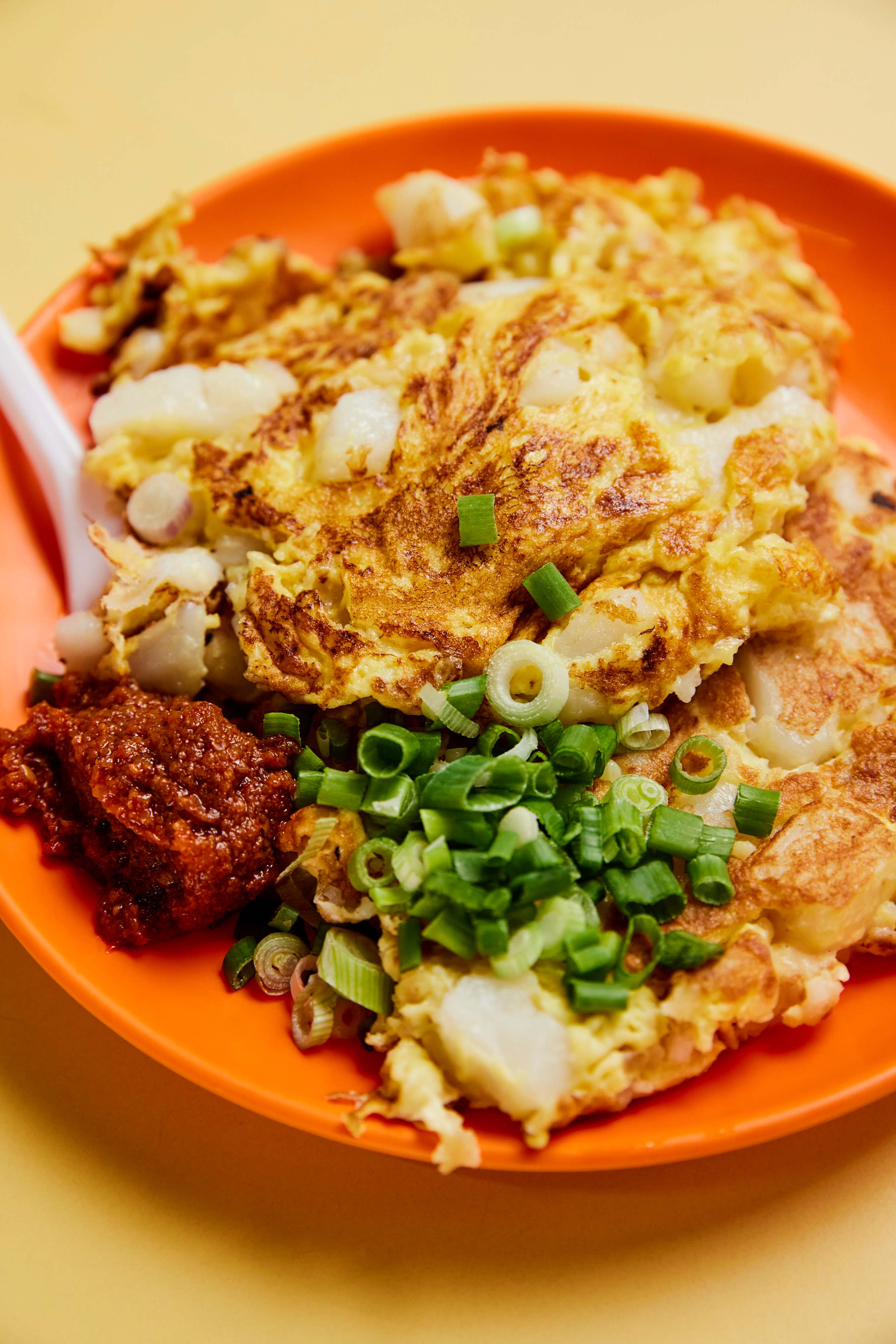
But don’t expect Ming Wei to suddenly embody Sun Wukong (below pic) while whipping up a plate of chai tow kway — these possessions, he says, don’t occur spontaneously. The only hint of the hawker’s medium activities at his stall is an altar with statuettes of the Monkey God, and hell deities Toa Ah Pek and Ji Ah Pek. But no, devotees don’t drop by for carrot cake and a consultation here. “No one has asked for that yet,” he says with a laugh, adding that he is open to scheduling appointments for anyone if they’re so inclined.
No part of this story or photos can be reproduced without permission from 8days.sg.
 Ming Wei channelling the Monkey God’s spirit during one of his sessions.
Ming Wei channelling the Monkey God’s spirit during one of his sessions.
Chinese spirit medium since 17
Visiting Chinese spirit mediums, also called tangki in Hokkien, is a Taoist practice that originated from Minnan in Fujian province, China. Folks there brought the practice along with them when they emigrated to countries like Taiwan, Malaysia and Singapore.
One common worship setting is in home-based temples – though technically, using HDB flats for public worship is prohibited. It was while visiting one of these home temples when Ming Wei was 17 that he “felt some sort of weird sensation in my body”. The medium there told him that he “might have the sixth sense to become a medium”, which was when he started practising. According to Ming Wei, it is not unusual to see other mediums as young as him. “I’ve met at least 20 others that are younger than 30. Age isn’t really a factor [in becoming a medium],” he says.
Although he describes the role of a spirit medium as voluntary – “it’s not the kind of thing that can become a full-time job” – he tells us that there is some obligation to it. “We believe that once you are discovered to have this sense, even if you were to run from it, the gods have their own ways of making you come back [to be a spirit medium], by changing your luck or altering life events. So I might as well do it now,” he declares.
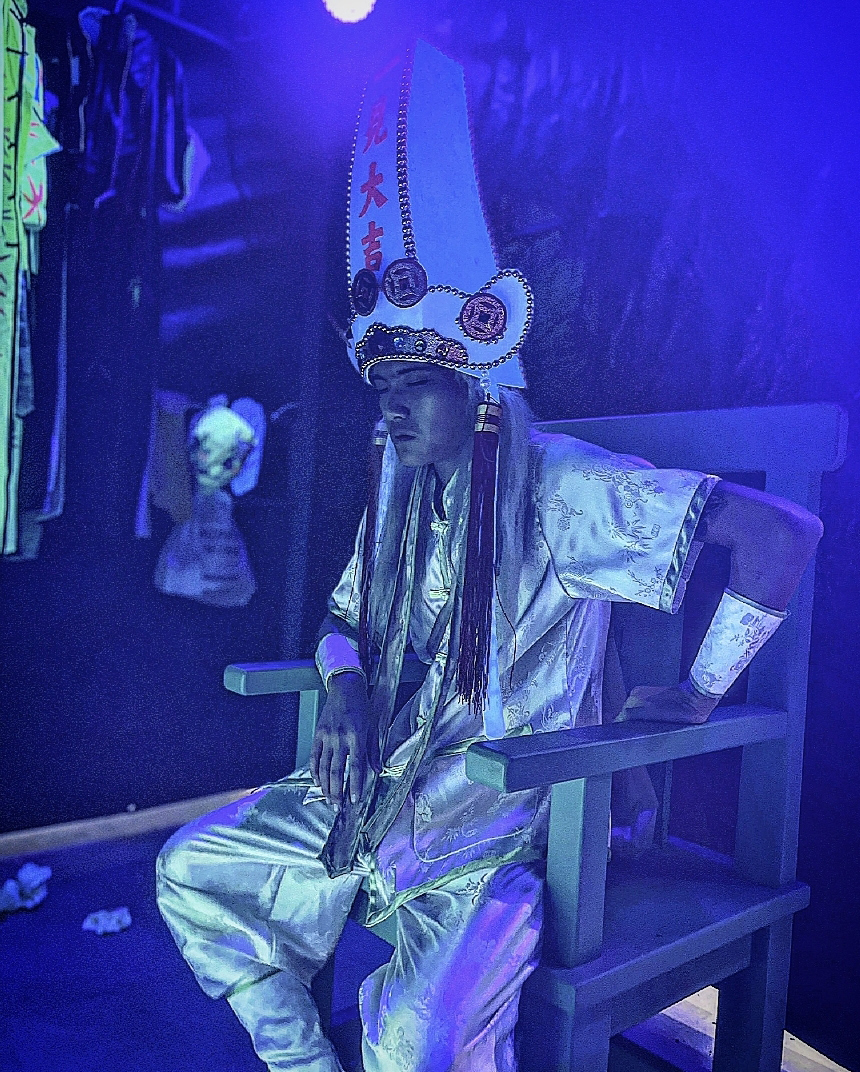 The hawker as hell deity Toa Ah Pek mid-trance.
The hawker as hell deity Toa Ah Pek mid-trance.
Hits himself “in the back with an axe” during trances
His parents are supportive of his calling – they help organise consultations which he holds about twice a month at various home temples. During these sessions, Ming Wei allows deities like the Monkey God and Toa Ah Pek (above) to “possess” his body. He describes the experience: “It almost feels like a nap – as if I just fell asleep for three hours. But when I come back [from the possession], I’d feel tired – because the energy that the deity used is my energy,” he says. While he is aware of what is happening in the moment, he is powerless to stop it: “During certain prayers, the gods will use me to hit myself in the back with an axe. I won’t be able to stop it,” he says matter-of-factly, explaining that “deities use various weapons to chase away negative energy and evil spirits”. Though he ends up with some “shallow cuts” that bleed, as “there must be blood as it’s believed the [tangki’s] blood has certain powers to bless the prayers” – he insists there is “no pain” from his wounds after leaving the trance as he believes that deities protect the spirit medium from harm.
Devotees approach him during the possession with requests or questions – some examples include which HDB flat to buy, or whether they should change jobs. “I don’t ask for any ang pow (red packet) upfront – I leave it to the deity [who’s possessing me] to decide,” he adds. “Usually, they will reject ang pows. They’d usually just say, ‘If what you wished for really came true, come back and burn three joss sticks for me,’ and that’s it.”
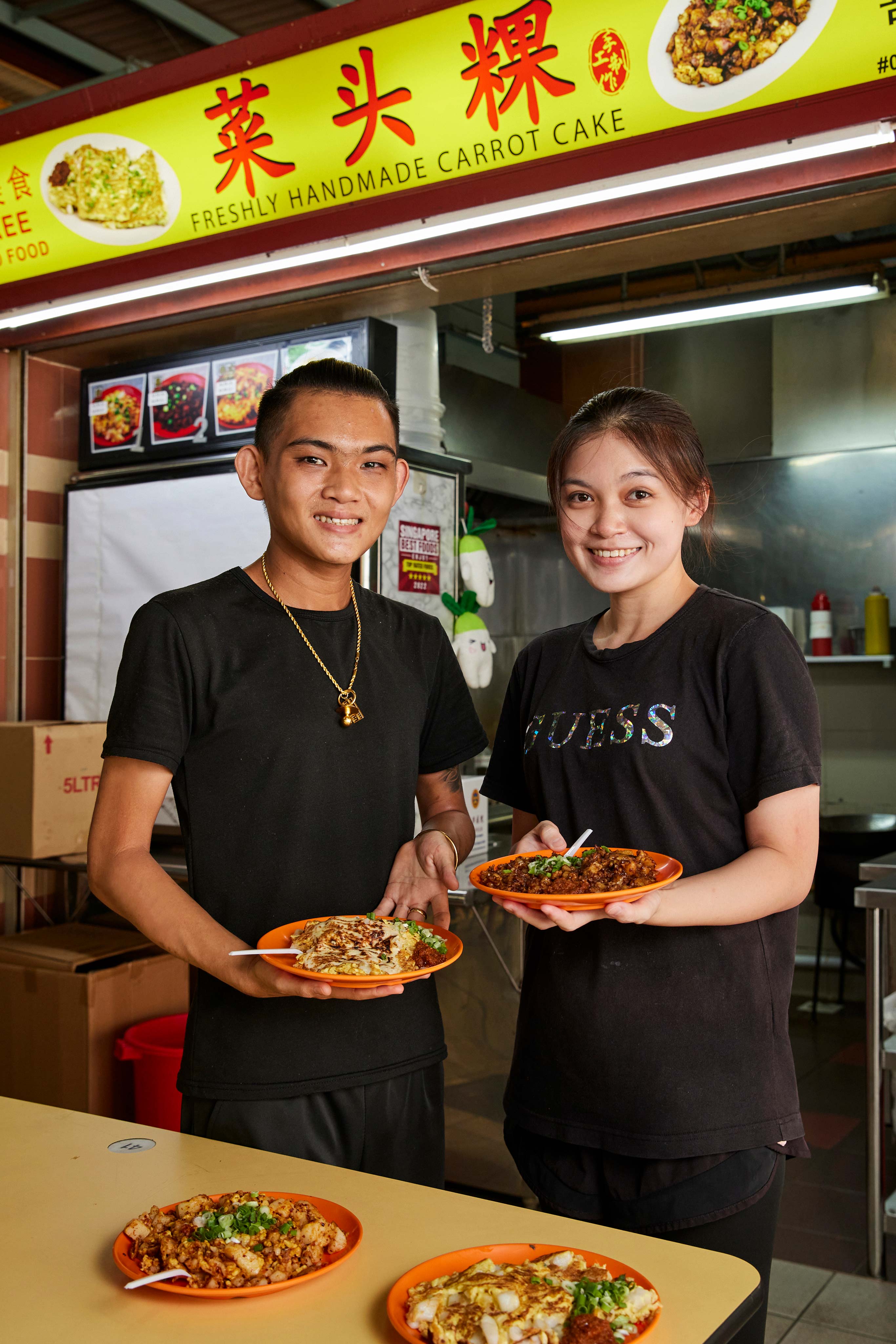
No prior cooking experience, but parents & cousin used to be hawkers
Prior to opening his stall, Ming Wei, who has a Nitec in F&B Operations, says he “honestly never really thought about being a hawker”. He adds: “I just remember telling my parents: “after getting my Nitec, I don’t want to further my studies. I will find my own way out,” he says.
He worked as a Grab delivery rider for two months after NS before his retired parents – who ran a Cantonese congee stall in Albert Centre Market and Food Centre a decade ago – suggested that he manage a chai tow kway hawker stall instead. They even said they would offer the $15K he needed to get the biz going.
But why sell carrot cake and not congee? “Because cooking porridge involves more prep work, so we decided that serving carrot cake would be easier for me,” explains Ming Wei.
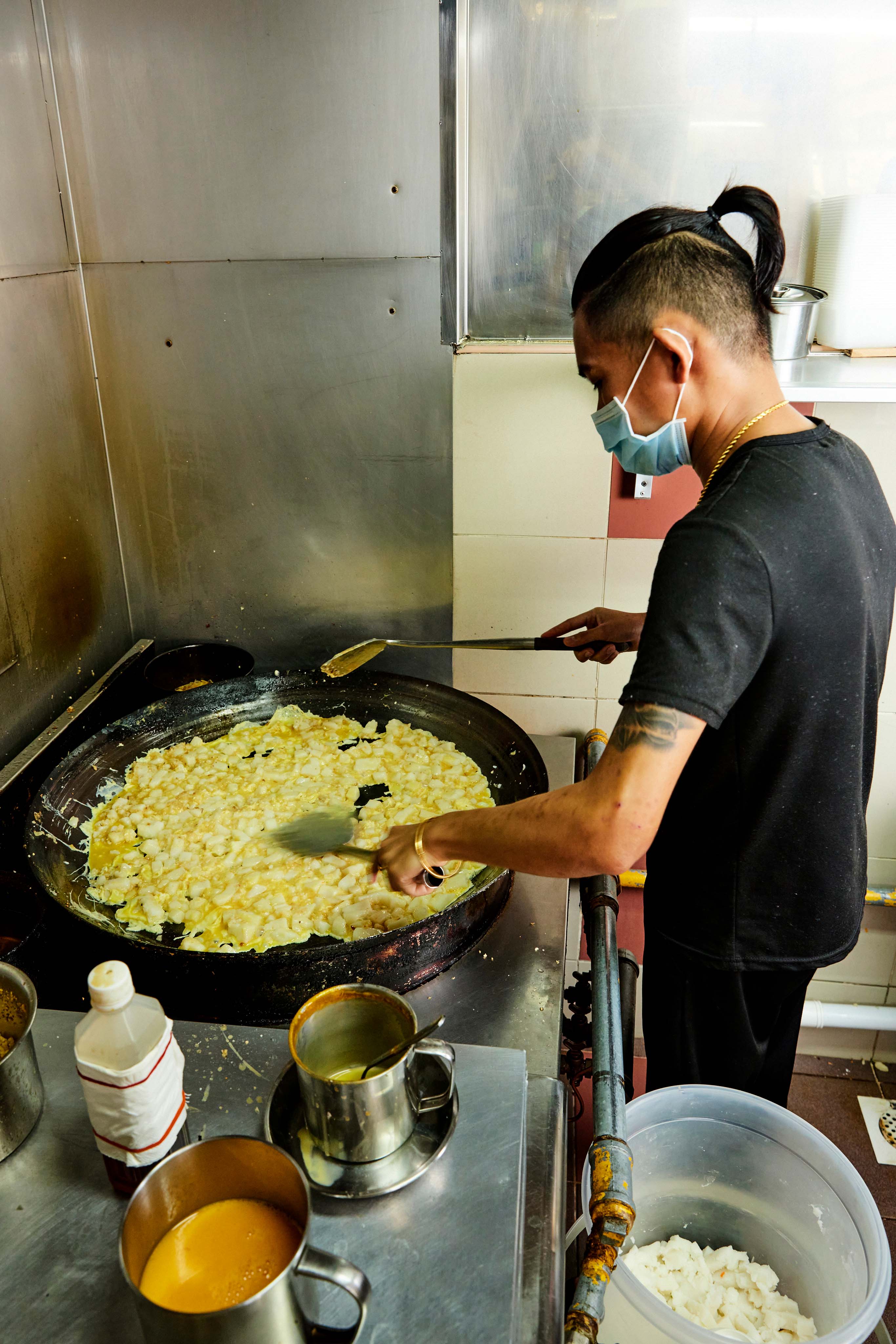
Consulted hell deity before becoming hawker
Despite his parents’ support, the 22-year-old was still unsure about embarking on a career as a hawker. So he consulted the gods on whether it was the right decision via… himself — his family members asked questions on his behalf while he was in a trance. “As I had zero experience [as a hawker], I was very scared. So I consulted Toa Ah Pek for advice, and he told me that I didn’t have to be afraid as he would be there to look after everything. And that I should go ahead and do it.”
But he asserts that a deity’s blessing isn’t a surefire ticket to success. “I will definitely have to work towards my goals. I believe that you can’t rely on the gods for everything – I also have to do my own part to succeed.”
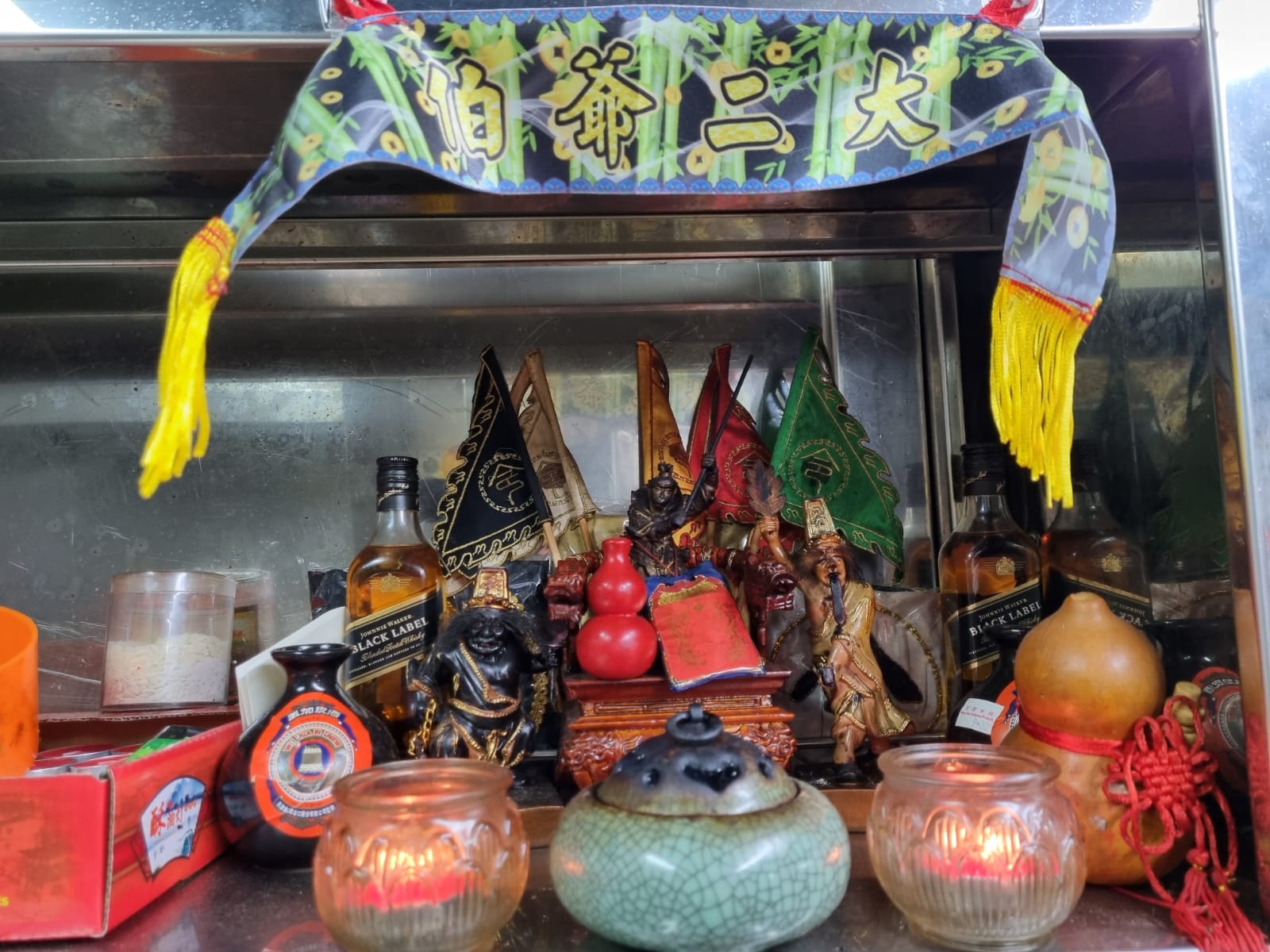
(From left) Deities Ji Ah Pek, the Monkey God and Toa Ah Pek keep watch at Qi Shan Carrot Cake stall’s altar.
Reassured by both his folks and hell deity Toa Ah Pek’s advice, Ming Wei took over a stall space and its equipment from his cousin, who was then operating a branch of another chai tow kway biz called Carrot Cubes at Cheng San. His cousin also trained him in the art of frying carrot cake during the handover, though Ming Wei tells us that none of his recipes are directly lifted from his cuz.
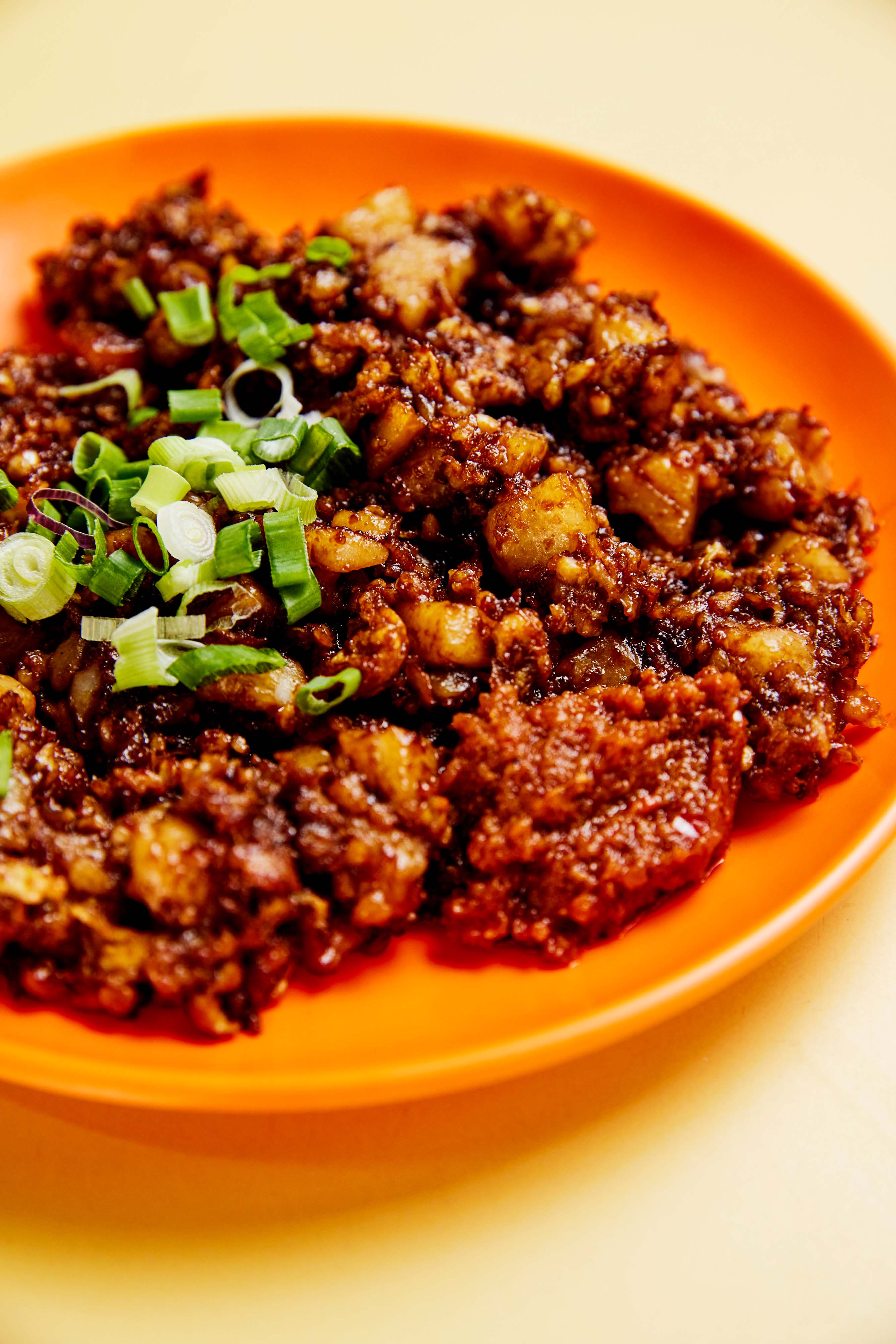
Building up the business
Ming Wei initially ran the stall with his mother. “But my mum started having health concerns, so my sister Jing Hui quit her job to take over,” he says. Mama now drops by only on weekends to help out.
Though it’s hard work, he sees the life of a hawker as one with many benefits. “We open for biz in the morning until about 2pm. After that, I can do whatever I want – meet friends, help out my family.” They manage to sell around 200 plates of carrot cake each day, which is enough for a “decent profit”.
Jing Hui, who took a “noticeable pay cut” to help her younger brother out, is a tad less optimistic. “At the start, waking up so early at 5am was hard to accept (laughs). There’s also no company benefits if you fall sick – no medical coverage, annual leave, or maternity leave. But of course, with this sort of business, you hope that you can eventually expand into something big.”
The siblings are focusing on expanding their presence on social media, while looking for more manpower so that they can lengthen their opening hours and potentially expand in the future – though nothing is set in stone yet. “For now, I’m really just focused on running this stall as well as I can,” says Ming Wei.
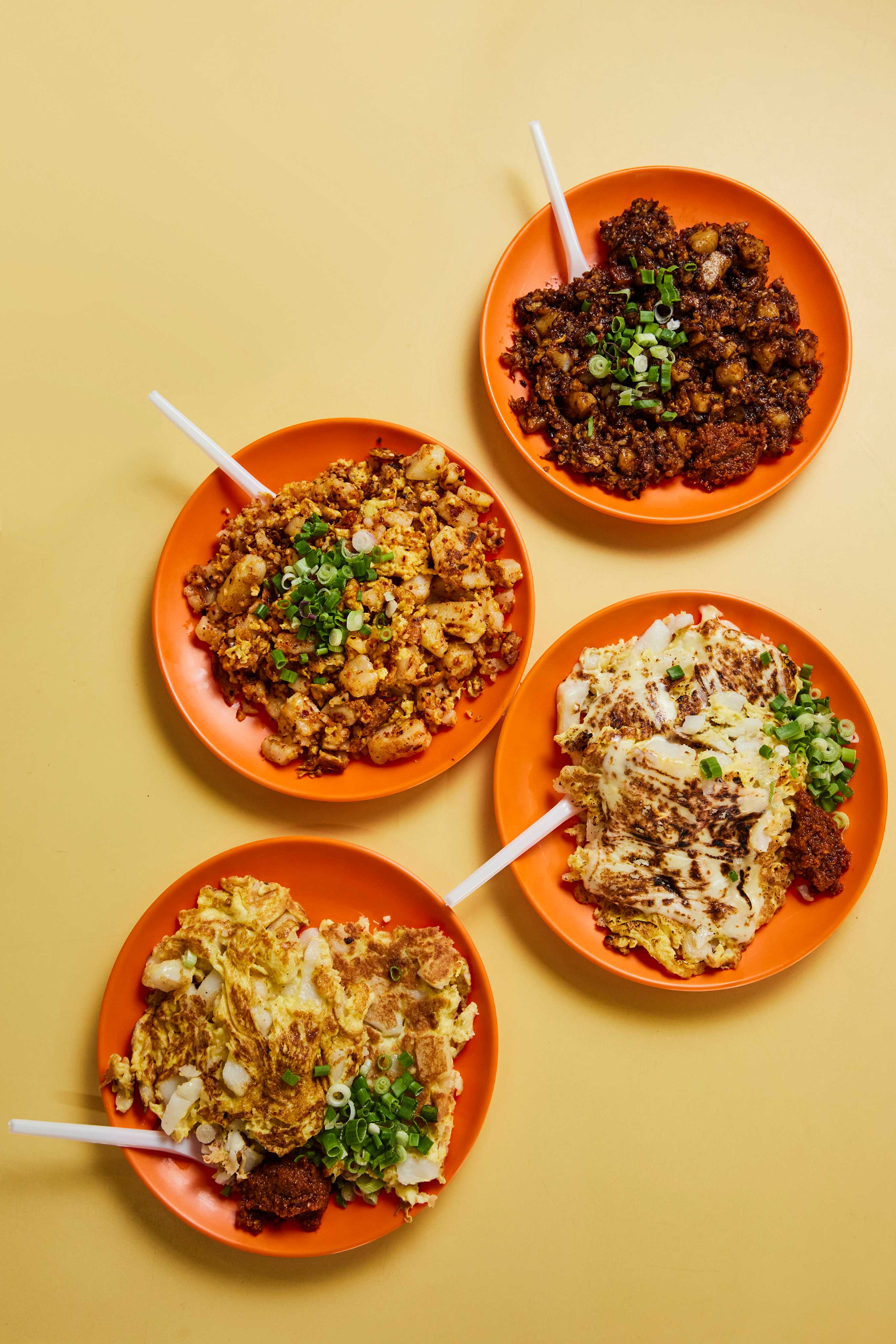
The menu
The boyish hawker handles cooking for the standard eggy white version ($3.50), while Jing Hui helps with taking orders and frying the dark caramel soy sauce-laden black version ($3.50) in a separate smaller wok.
Fancy fusion options include the Thai Style ($4.50) one with lots of “Thailand-imported chilli flakes” and a wacky-sounding Burnt Cheese ($4.50).
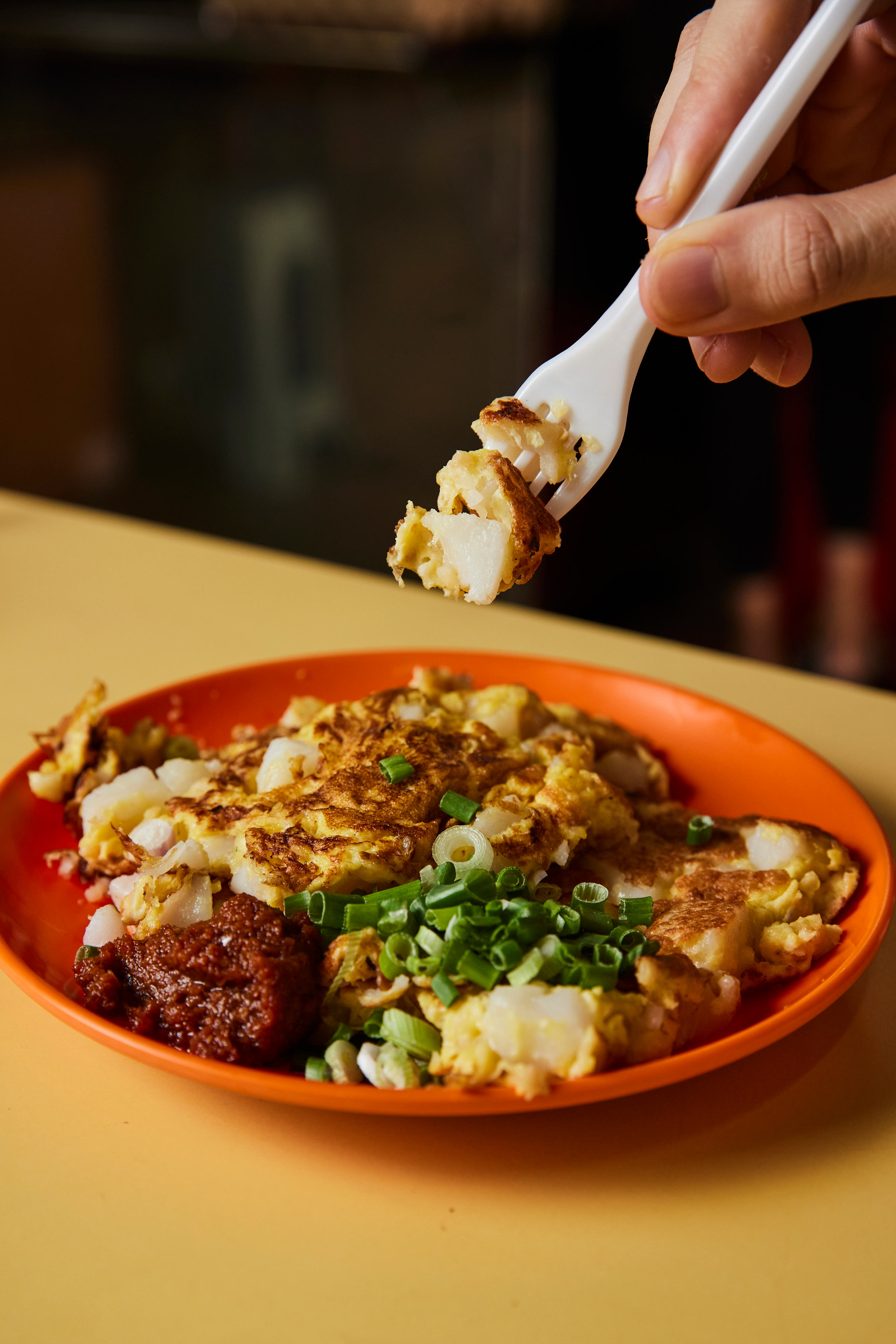
White Carrot Cake, $3.50
The neat, omelette-like rectangles laden with chai poh (preserved radish) and fish sauce are pleasant and decently tasty, though somewhat unremarkable. While we like the steamed handmade radish cake’s (bought from the previous stall’s supplier) fork-tender texture and creamy mouthfeel, the dish lacks an assertive smoky fragrance or crispy, browned edges. Slather on some sambal for an added spicy kick.
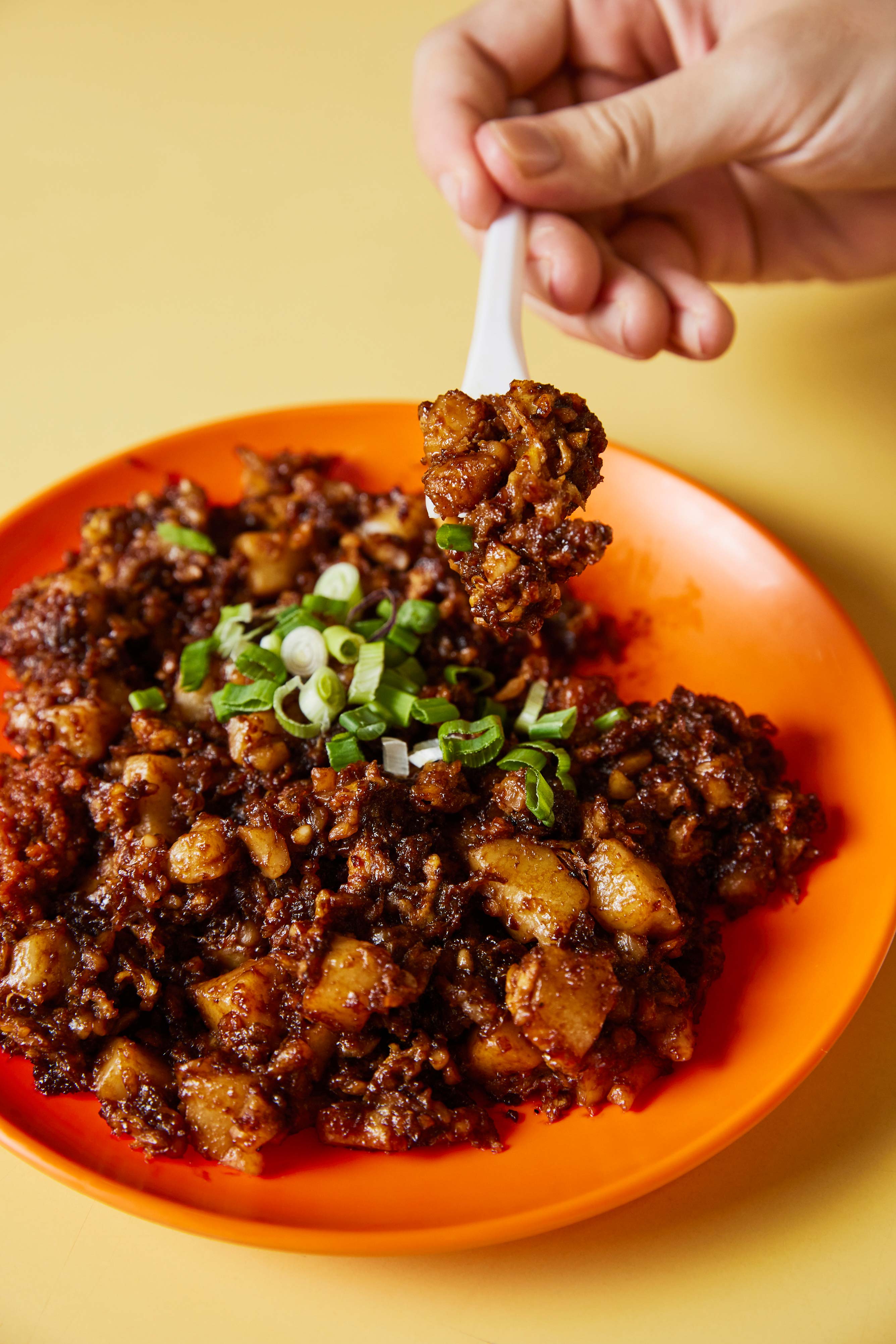
Black Carrot Cake, $3.50 (8 DAYS Pick!)
We find the dark version – cooked by Ming Wei during our visit – superior. It’s sweet, sticky and messy, with every bit of kway well-covered in loads of caramelly dark soy sauce – just the way we like it. The radish cake’s luscious mouthfeel is especially apparent in this version. Shiok.
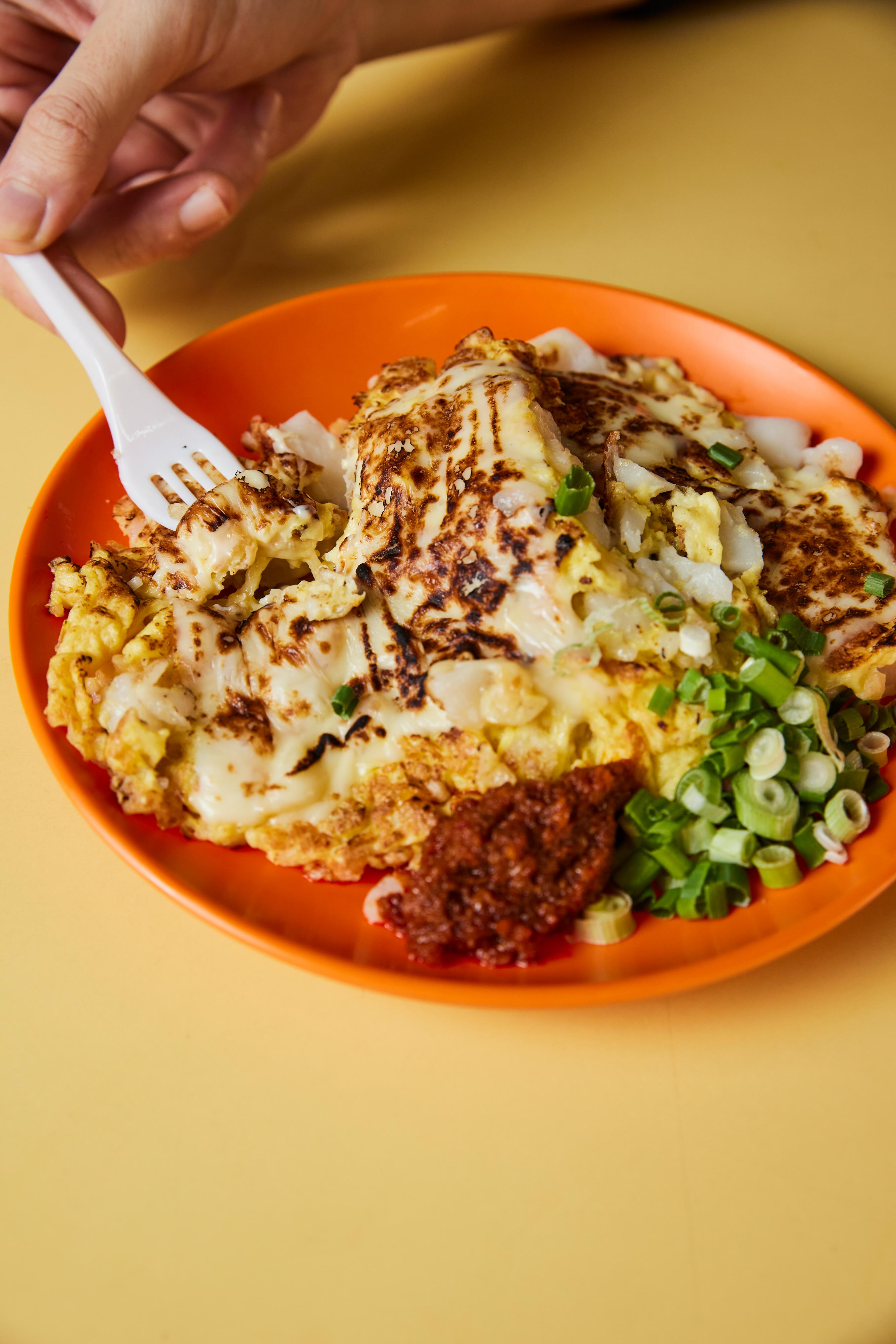
Burnt Cheese Carrot Cake, $4.50 (8 DAYS Pick!)
Ming Wei, in what he describes as a “random idea come to life”, slaps two slices of processed cheddar cheese onto white carrot cake, which he then torches for smoky oomph. As simple as that sounds, the resulting chai tow kway is surprisingly addictive – reminiscent of a gooey-centered cheese omelette like our mom used to make, with a sweet-savoury fragrance from bits of preserved radish.
Note that the dish is usually only available on weekdays, as the hawkers find it difficult to prepare during the weekend rush. “But you can order it anytime lah – if we can, we’ll be sure to do it for you,” Ming Wei says gamely.
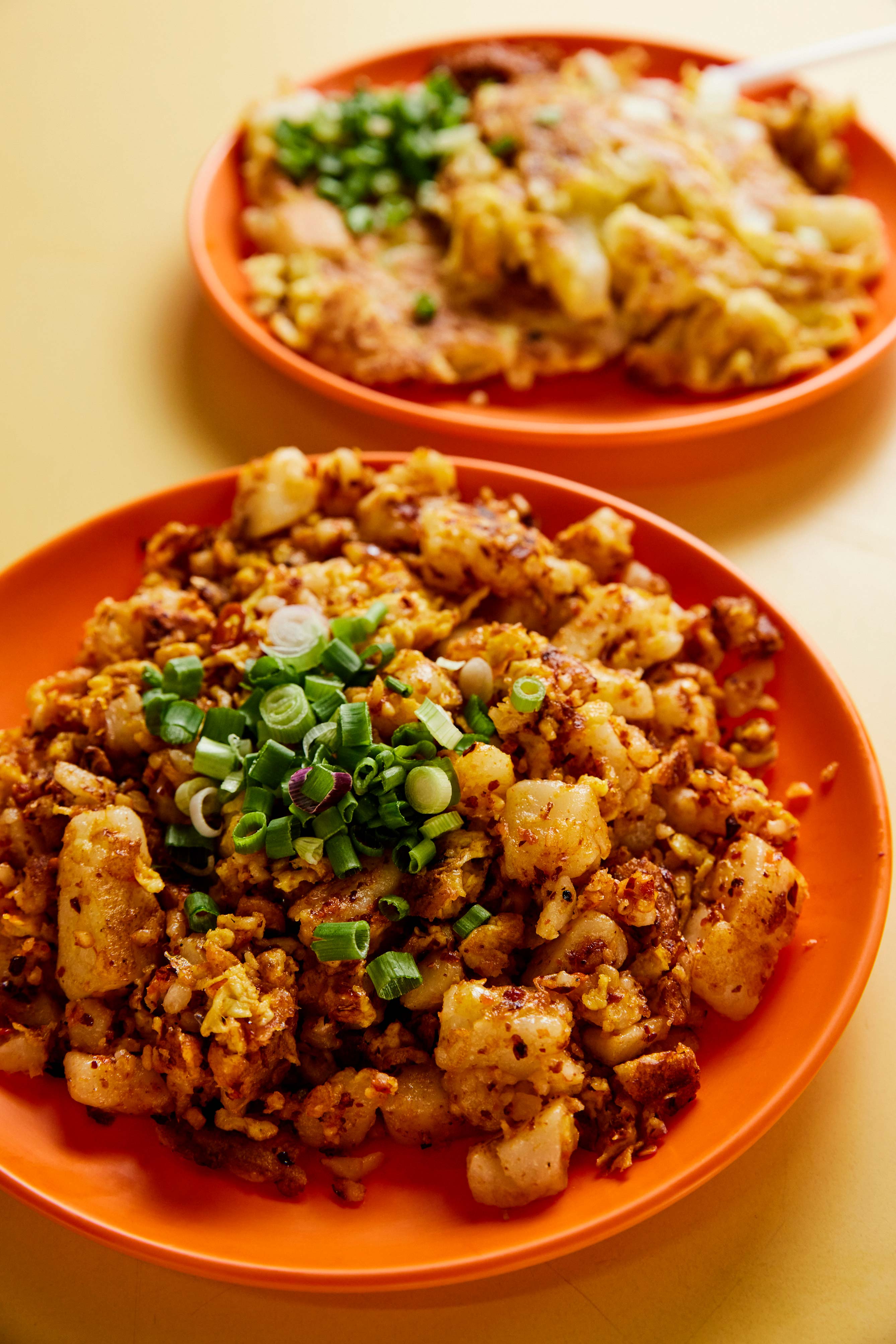
Thai Style Carrot Cake, $4.50
A mix of chilli flakes and hae bee, imported from Thailand, is mixed into a plate of white carrot cake. It sounds intriguing on paper, but fails in its execution as the fiery chilli blend takes over the entire plate. We could barely detect any of the umami from the dried shrimp, let alone enjoy our chai tow kway without reaching for water with every other bite.
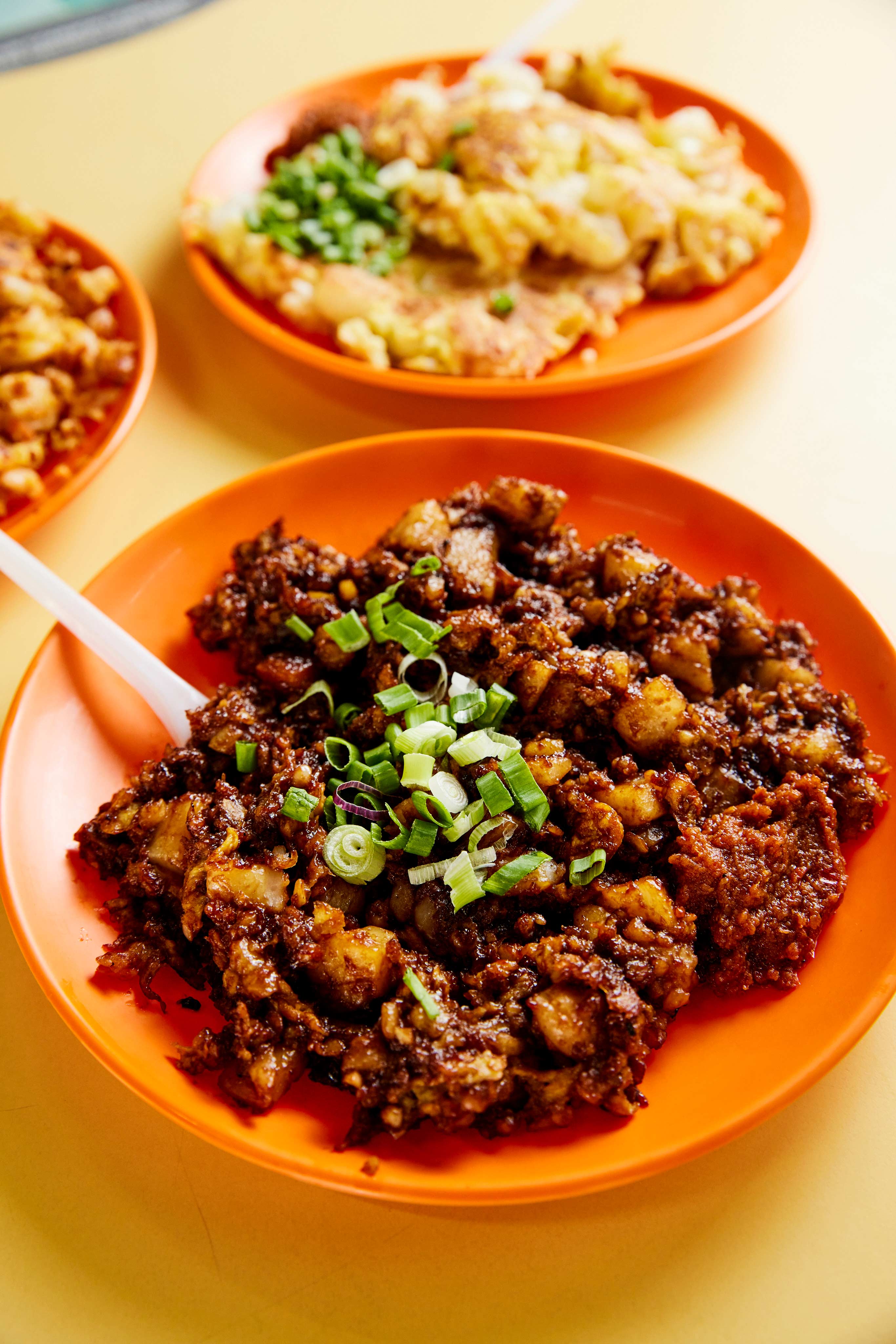
Bottom line
Despite their youth and relative inexperience, the Gen Z hawkers dish out a competent take on a hawker staple. Our favourites are the caramelised, ugly delicious black carrot cake and surprisingly yummy modern burnt cheese version. Worth a try if you happen to be in Ang Mo Kio. That Ming Wei has an interesting background as a spirit medium adds a colourful backstory to this otherwise run-of-the-mill hawker stall.
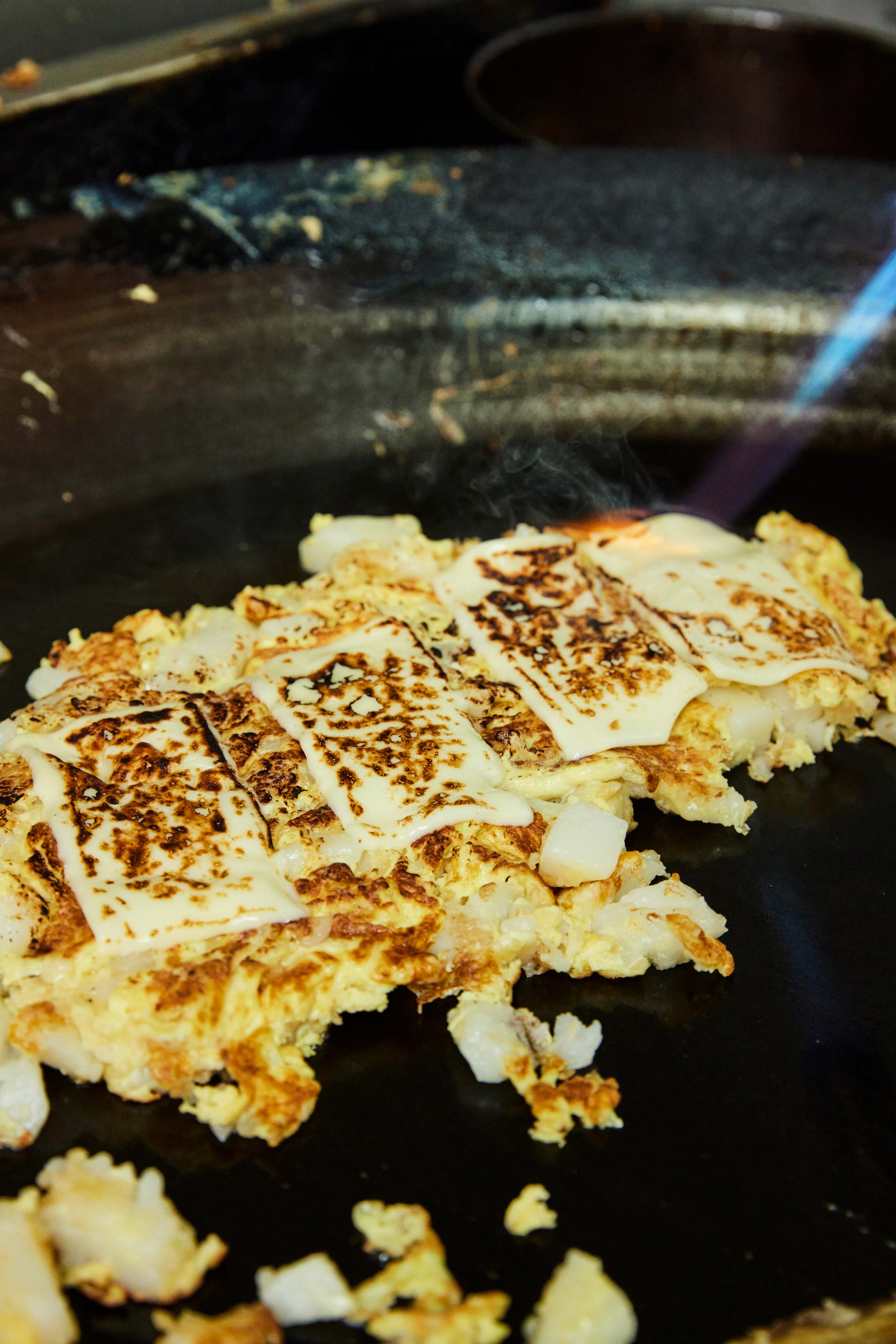
The details
Qi Shan Carrot Cake is at #01-115, Cheng San Market & Cooked Food Centre, 527 Ang Mo Kio Ave 10, S560527. Tel: 8183-1878. Open daily except Thur, 6am – 1pm. More info via Facebook, Instagram & Tiktok. Delivery via Deliveroo & Grabfood.
Photos: Aik Chen, Qi Shan Carrot Cake
No part of this story or photos can be reproduced without permission from 8days.sg.

